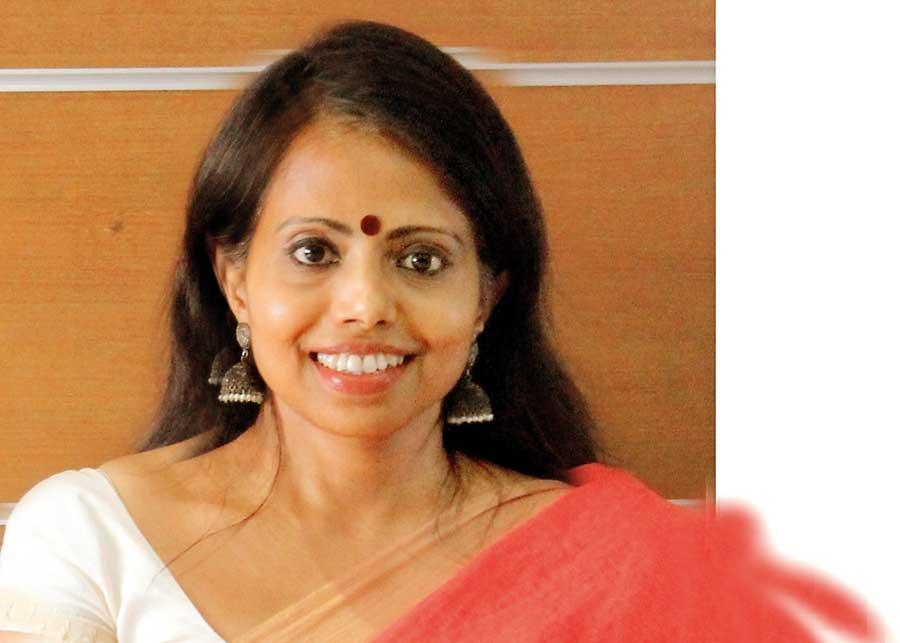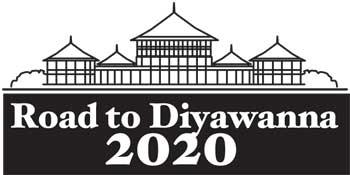Reply To:
Name - Reply Comment

We must acknowledge torture is a problem
Laws alone cannot achieve social change
Media should not sexualize and infantilize women
Nationalism has the power to empower as well as to enslave
 The normalization of violence in Sri Lanka is a deep seated social problem, says Ambika Satkunanathan, who is a lawyer and human rights advocate on the Tamil National Alliance (TNA) National List for the upcoming parliamentary polls. A former member of the Human Rights Commission of Sri Lanka (HRCSL) and chairperson of the Neelan Tiruchelvam Trust, Satkunanathan has campaigned for gender equality, social justice and peace. She spoke to Daily Mirror on several issues including police violence, women’s rights and nationalism. Excerpts:
The normalization of violence in Sri Lanka is a deep seated social problem, says Ambika Satkunanathan, who is a lawyer and human rights advocate on the Tamil National Alliance (TNA) National List for the upcoming parliamentary polls. A former member of the Human Rights Commission of Sri Lanka (HRCSL) and chairperson of the Neelan Tiruchelvam Trust, Satkunanathan has campaigned for gender equality, social justice and peace. She spoke to Daily Mirror on several issues including police violence, women’s rights and nationalism. Excerpts:
Q How serious is police violence and torture in Sri Lanka? And what systemic and structural changes are needed to counter it?
Police violence is systemic, spans successive governments and has been identified as such by the Supreme Court (SC), the HRCSL and civil society. In 1995, the SC noted Fundamental Rights (FR) violations by the police were continuing even 18 years after the 1978 Constitution, which contains protections against torture. The reason for police impunity is the immunity enjoyed by those who commit such violations. This immunity creates the belief they can use violence and never be held accountable.
We must address the root causes of police brutality. First, we must acknowledge torture is a problem, and not deny it. Secondly, we must hold perpetrators accountable. The 30-year war impacted how we view violence and people became numb to violence to cope with their daily lives. Violence has hence been normalized.
Q Sri Lanka enacted the ‘Convention against Torture Act’ in 1994. Why are such laws so ineffective?
Laws alone cannot achieve social change. Addressing police violence requires reviewing basic police structures and practices, and making them public. We must design preventive, remedial and accountability measures and involve sociologists, criminologists and psychologists in the process. We must invest in communities to address the drivers of crime. For example, increasing job opportunities, preventing homelessness, moving non-violent offenders away from prisons and into rehabilitation, and crafting community responses to non-violent offences and decriminalizing them.
Promising safety through criminalization, imprisonment and the threat of violence, makes us all more insecure and unsafe.
Q The threat of violence is often not seen as a form of violence. How does this contribute to the normalization of violence?
The threat of violence creates fear which society believes will deter ‘bad people’ from committing crimes. Even with children, the threat of violence - a smack or some sort of physical  punishment - is used to discipline them in the belief it will prevent them from further mischief. But instead doesn’t it teach children it’s alright to use violence to achieve outcomes? Doesn’t it make it acceptable in their minds to hit another child in the classroom or push them in the playground?
punishment - is used to discipline them in the belief it will prevent them from further mischief. But instead doesn’t it teach children it’s alright to use violence to achieve outcomes? Doesn’t it make it acceptable in their minds to hit another child in the classroom or push them in the playground?
Disturbingly, I have found people who have no problem with violence being used against those they believe are ‘bad’. This is of course subjective and shaped by each one’s beliefs and prejudice. It is viewed as violence only when they personally experience it, or when used against those viewed as ‘good’ or ‘innocent’, like the 14-year-old autistic boy from Aluthgama. But if a drug trafficker is tortured, how many would be outraged?
The selective acceptance of violence normalizes it in our psyche and practice, making society more violent. How this acceptance is entrenched in our psyche is evident in our everyday dealings with each other. Also, when institutions deny remedies to citizens, violence is seen as a means of dispute resolution and accountability. People stoning or setting fire to vehicles in a road accident is an example of them thinking it is normal to engage in violence, which they believe is a means of holding someone accountable.
Q You have also pointed to the police being a masculine and hierarchical institution, and how that contributes to the culture of violence. Isn’t this true of many other Sri Lankan institutions too?
Yes, very much so. We are a patriarchal society. We pay lip service to women’s equality but treat women in a paternalistic way, as if they don’t know what is good for them. Often, women are not allowed to make life decisions for themselves, and are restricted by rules and practices. Women that challenge these are labelled as having ‘bad moral character’ or being ‘too western’ and so on.
Equality and equal treatment before the law are enshrined in our Constitution, but are often not observed in practice. So the patriarchal nature of society is embedded in the processes and culture of organisations, leading to institutional structures and procedures discriminating against women. For example, there are no cadre positions for women in the Senior DIG and DIG positions in the Police Department, which several women police officers have challenged via FR petitions.
 Q What is your take on attempts to improve women’s political participation in Sri Lanka? For example, allocating a 25% quota for women at the 2018 Local Government elections. How effective are such affirmative action measures?
Q What is your take on attempts to improve women’s political participation in Sri Lanka? For example, allocating a 25% quota for women at the 2018 Local Government elections. How effective are such affirmative action measures?
Much more needs to be done in addition to affirmative action measures. Quotas alone cannot increase women’s political participation and representation. Even though women play an important role campaigning and mobilizing support for political parties, they are left out of party decision making and ignored as potential candidates. Furthermore, the political culture in Sri Lanka is misogynist, and women are subject to vicious and scurrilous attacks which are aimed at demeaning them. Addressing this requires changing social attitudes and the media following ethical practices.
Q What ethical practices should the media follow in this regard?
The media should only report verified news and avoid gossip, rumours and fake news. They should stop using sexist, derogatory and judgmental language when referring to women. Stop sexualizing and infantilizing women. Move away from ‘manels’ and have women on talk shows and discussion panels. Have more women in decision-making positions in the media with the power to actually make decisions.
Q The President has empowered the security forces to maintain public order under the Public Security Ordinance (PSO). His predecessor did the same, and people have come to accept it. How do you view this?
In a democracy maintaining law and order is not the function of the military. The PSO provides for this only in times of emergency. When done routinely, it normalizes the exception and militarizes the process of maintaining law and order. This creates space for rights violations and contributes to the overall militarization of society.
Q You are on the TNA National List. Some see politics and nationalism as a harmful combination, some see it in a more positive light. How do you see it?
Historically, Tamil nationalism is a defensive nationalism that emerged in response to Sinhala nationalism. It was based on demands for equal rights in language, education, land settlement, and the right to have a voice in governance through power sharing between the centre and areas where Tamils were a majority, and the right to be free from discrimination or violence.
In Sri Lanka the concept of ‘nation’ is equated with secession. This is a misrepresentation, as illustrated by the late Dr Neelan Tiruchelvam. He says communities, like Tamils, perceive themselves not merely as a numerical minority but a nationality, with a collective identity and rights linked to it. This perception is compounded by oppressive state actions, which can push communities away from a secular idea of themselves and towards a more fundamental identity.
When the state failed to address the demands of the peaceful Tamil movement for rights, it evolved into an armed struggle, based on militant nationalism. This also led to violence against Sinhala civilians, internal violence, and deepened rifts between Tamils and Muslims due to the forced eviction of Muslims from the North and violence against them.
This shows how nationalism, which under colonialism was anti-imperialist, can become a nationalism constructed on the ‘other’ rather than common citizenship. The tragedy of such nationalism is it makes ‘enemies’ of even allies. Dr Tiruchelvam, was viewed as traitor by many in the Sinhala community for advocating a peaceful, federal solution to the ethnic conflict that addressed legitimate Tamil demands and aspirations. Concurrently, he was viewed as an enemy by the LTTE and sections of the Tamil community for working with the state on constitutional reform, and paid with his life. Hence, this form of nationalism has the power to empower as well as to enslave.
Addressing Tamil nationalist claims requires dealing with the root causes of the ethnic conflict. It requires us to stop being afraid of devolution and falling prey to false equations of it to secession. It requires any constitutional arrangement to respond to the collective perception of the Tamils who see themselves as a nation, which is linked to having a majority territorial presence in certain areas with a distinct history. As Dr Tiruchelvam has stated, there are constitutional arrangements in multi-ethnic societies that preserve unity, while also preserving the collective identity and rights of ethnic groups within a political framework.